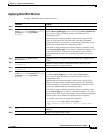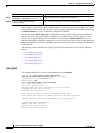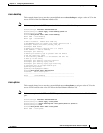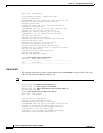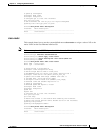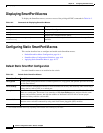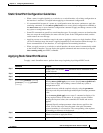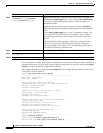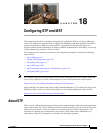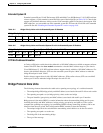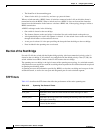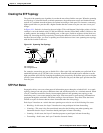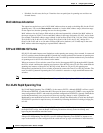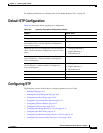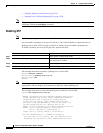
CHAPTER
18-1
Software Configuration Guide—Release 15.0(2)SG
OL-23818-01
18
Configuring STP and MST
This chapter describes how to configure the Spanning Tree Protocol (STP) on a Catalyst 4500 series
switch. This chapter also describes how to configure the IEEE 802.1s Multiple Spanning Tree (MST)
protocol on the Catalyst 4500 series switch. MST is a new IEEE standard derived from Cisco’s
proprietary Multi-Instance Spanning-Tree Protocol (MISTP) implementation. With MST, you can map
a single spanning-tree instance to several VLANs.
This chapter provides guidelines, procedures, and configuration examples. It includes the following
major sections:
• About STP, page 18-1
• Default STP Configuration, page 18-7
• Configuring STP, page 18-7
• About MST, page 18-22
• MST Configuration Restrictions and Guidelines, page 18-29
• Configuring MST, page 18-29
Note For complete syntax and usage information for the switch commands used in this chapter, look at the
Cisco Catalyst 4500 Series Switch Command Reference and related publications at this location:
http://www.cisco.com/en/US/products/hw/switches/ps4324/index.html
If the command is not found in the Catalyst 4500 Command Reference, it is located in the larger Cisco
IOS library. Refer to the Cisco IOS Command Reference and related publications at this location:
http://www.cisco.com/en/US/products/ps6350/index.html
About STP
STP is a Layer 2 link management protocol that provides path redundancy while preventing undesirable
loops in the network. For a Layer 2 Ethernet network to function properly, only one active path can exist
between any two stations. A loop-free subset of a network topology is called a spanning tree. The
operation of a spanning tree is transparent to end stations, which cannot detect whether they are
connected to a single LAN segment or a switched LAN of multiple segments.



